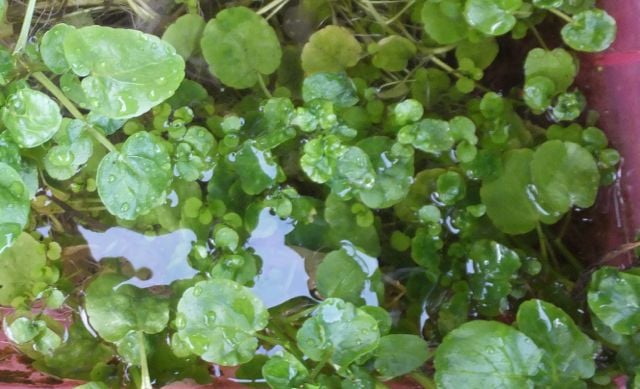 This depends on so many different factors. We might consider concentration, range or sheer quantity of vitamins produced. Or minerals, antioxidants, antho-cyanins each contains and so on. Any contender will be lesser value if the crop comes all at once and has difficult storage or processing, ideally it’s continuous year round. And of course it has to be palatable enough to want to eat.
This depends on so many different factors. We might consider concentration, range or sheer quantity of vitamins produced. Or minerals, antioxidants, antho-cyanins each contains and so on. Any contender will be lesser value if the crop comes all at once and has difficult storage or processing, ideally it’s continuous year round. And of course it has to be palatable enough to want to eat.
Surprisingly there’s a plant that ticks just about every box. One of the first super-foods, it’s long been recommended as a health promoter and was hugely popular during Victorian times.
Under cover this grows 365 days a year albeit more slowly in mid-winter.
So what is this wonder-food? Nasturtium officinale, our common Watercress, a native found almost anywhere near water. Now contrary to popular belief you do not need a running chalk stream to grow watercress, though that would be nice. Running, mineral rich water, over chalky gravel, in full sun will give the best watercress. Yet this plant will grow well in just- moist pots or trays of compost.
(Watercress does not need to be under water and grows into the air like most crops. It achieves the finest succulence under running water but the advantage is slight. The only real drawbacks of growing in pots of moist compost are more damage from slugs, and growing out of the water entirely watercress runs to flower and seed more easily.)
Pots of compost can be kept continually moist by standing them on capillary matting or in very shallow saucers of water. Deeper trays or total submersion are no improvement as water stagnates unless there’s a slight flow. However if a gentle flow can be arranged then a wee bath becomes almost as good as your own running stream.
Given too much flow compost may wash away. But worse, as with most water plants, submerged compost becomes mud and muddy water instead of staying in the pots. Hold it in place with gravel (with lime / chalk / crushed shells added). I simply use woven nylon pouches (old socks) to put the compost in and weigh these down in shallow baths with a slow change of water automatically supplied (drip from a hose). But as I said, all this is not necessary, to get a pretty good crop then pots and trays of wet compost do just fine.
You can start from seed. However just buy fresh watercress from the shops. Treat each piece as a cutting inserted into wet compost, sharp sand or even just water. They will soon grow roots and you’re away. Eventually when plants start to run to seed divide them up and start again. Or just let them self seed onto trays of moist compost.
Oh and one huge advantage of growing your own watercress under cover is you can be sure there’s no dead sheep upstream.


